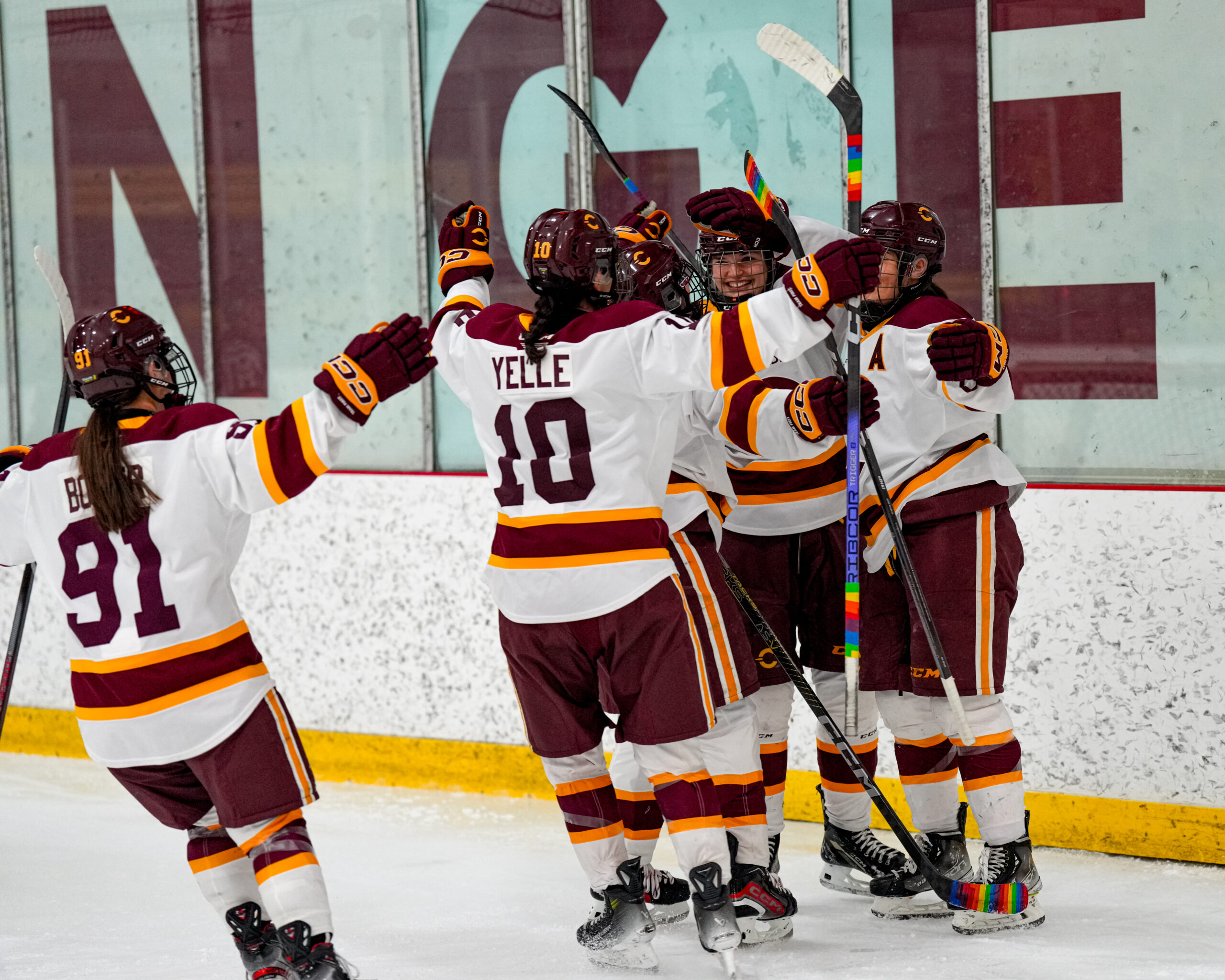The teams take two out of a possible four points against Ottawa as playoffs draw closer.
The Ed Meagher Arena was home to the first annual Pride Weekend on Feb. 3 and 4. Organized iIn partnership with Queer Concordia, Pride Weekend is an event that is very important for the Stingers’ organization.
“For our team, we always talk about creating an inclusive environment,” said Stingers women’s hockey head coach Julie Chu. “Whether it’s sexual orientation, gender identity, or your ethnicity, it is about coming to a place where everybody can figure out who they are in a safe and welcoming environment.”
With the festivities underway, the Stingers’ men’s hockey team kicked off the busy weekend of action as they faced off against the University of Ottawa Gee-Gees.
The two teams played tight defense through the first thirty minutes of the game as the physicality kept scoring opportunities to a minimum. Mid-way through the second period, the Gee-Gees finally opened the scoring on a shot that beat goaltender Jordan Naylor. Despite the momentum shifting to the road team, the Stingers struck back seconds later. Stingers’ forward Mathieu Bizier beat Ottawa goaltender Franky Lapenna to cap a dominant shift in the Gee-Gees’ zone, tying the game 1-1.
As the third period began, the intensity between the two teams continued. A big collision along the boards resulted in a power play that Ottawa would take advantage of in a big way. Two goals in a matter of seconds put the Gee-Gees up 3-1 with 10 minutes remaining. Yet, the Stingers would respond again.
A power play opportunity for the Stingers saw forward Tyler Hylland find the back of the net with eight minutes remaining, shifting the momentum back on the home side.
However, a slew of shots and another power play opportunity were not enough for the Stingers to pull even, and Ottawa escaped with a 3-2 victory on the road.
“I found tonight was kind of a playoff game,” Stingers’ head coach Marc-André Elément shared post game. “It’s going to be those types of games in the playoffs and I think we just need to learn from games like [tonight] and get better.”
The Stingers men’s hockey team will wrap up their regular season on Feb. 8 against the Université du Québec à Trois-Rivières Patriotes. Puck drop is set for 7 p.m.
Photo Credit: Concordia Athletics
As Pride Weekend continued, it was time for the Stingers women’s hockey team to take to the ice for their game against the Ottawa Gee-Gees. It did not take long for the Stingers to get on the board first.
Defender Sandrine Veillette found a seam that beat the Ottawa goaltender six minutes into the game, giving the Stingers a 1-0 lead early. Four minutes later, defender Alexandra-Anne Boyer extended the Stingers’ lead on the power play making it a 2-0 game.
The Gee-Gees would get a goal back late in the first period, but forward Rosalie Bégin-Cyr would respond with a goal of her own to regain the two-goal cushion.
Chippy play and staunch goaltending was the story for the majority of the second and third periods. While the teams had a total of 10 power plays in the final 40 minutes of the game, the defenders stood their ground and kept each team off the scoreboard in key moments of the game.
As the clock ran down, Stingers goaltender Arianne Leblanc earned her ninth of the season while the team improved to a perfect 22-0-0 regular season record.
Coach Chu shared post game what the win means to the team. “For sure we have things coming out of each game that we want to work on and get better at in the next week. We will make sure that we keep focusing on one game at a time and make the most of every opportunity.”
It is another big win for the Stingers as it concludes a festive weekend of events.
The Stingers women’s hockey team will continue their sensational regular season campaign on Feb. 9 when they face off against the Bishop’s University Gaiters. Puck drop is set for 7 p.m.
